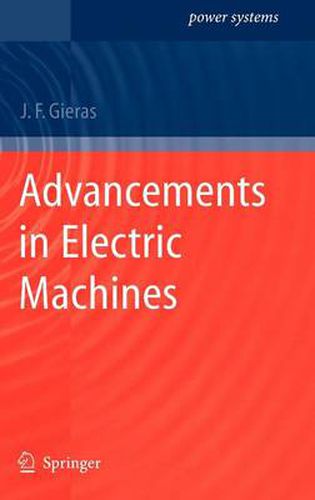Readings Newsletter
Become a Readings Member to make your shopping experience even easier.
Sign in or sign up for free!
You’re not far away from qualifying for FREE standard shipping within Australia
You’ve qualified for FREE standard shipping within Australia
The cart is loading…






This title is printed to order. This book may have been self-published. If so, we cannot guarantee the quality of the content. In the main most books will have gone through the editing process however some may not. We therefore suggest that you be aware of this before ordering this book. If in doubt check either the author or publisher’s details as we are unable to accept any returns unless they are faulty. Please contact us if you have any questions.
Traditionally, electrical machines are classi?ed into d. c. commutator (brushed) machines, induction (asynchronous) machines and synchronous machines. These three types of electrical machines are still regarded in many academic curricula as fundamental types, despite that d. c. brushed machines (except small machines) have been gradually abandoned and PM brushless machines (PMBM) and switched reluctance machines (SRM) have been in mass p- duction and use for at least two decades. Recently, new topologies of high torque density motors, high speed motors, integrated motor drives and special motors have been developed. Progress in electric machines technology is stimulated by new materials, new areas of applications, impact of power electronics, need for energy saving and new technological challenges. The development of electric machines in the next few years will mostly be stimulated by computer hardware, residential and public applications and transportation systems (land, sea and air). At many Universities teaching and research strategy oriented towards el- trical machinery is not up to date and has not been changed in some co- tries almost since the end of the WWII. In spite of many excellent academic research achievements, the academia-industry collaboration and technology transfer are underestimated or, quite often, neglected. Underestimation of the role of industry, unfamiliarity with new trends and restraint from technology transfer results, with time, in lack of external ?nancial support and drastic - cline in the number of students interested in Power Electrical Engineering.
$9.00 standard shipping within Australia
FREE standard shipping within Australia for orders over $100.00
Express & International shipping calculated at checkout
This title is printed to order. This book may have been self-published. If so, we cannot guarantee the quality of the content. In the main most books will have gone through the editing process however some may not. We therefore suggest that you be aware of this before ordering this book. If in doubt check either the author or publisher’s details as we are unable to accept any returns unless they are faulty. Please contact us if you have any questions.
Traditionally, electrical machines are classi?ed into d. c. commutator (brushed) machines, induction (asynchronous) machines and synchronous machines. These three types of electrical machines are still regarded in many academic curricula as fundamental types, despite that d. c. brushed machines (except small machines) have been gradually abandoned and PM brushless machines (PMBM) and switched reluctance machines (SRM) have been in mass p- duction and use for at least two decades. Recently, new topologies of high torque density motors, high speed motors, integrated motor drives and special motors have been developed. Progress in electric machines technology is stimulated by new materials, new areas of applications, impact of power electronics, need for energy saving and new technological challenges. The development of electric machines in the next few years will mostly be stimulated by computer hardware, residential and public applications and transportation systems (land, sea and air). At many Universities teaching and research strategy oriented towards el- trical machinery is not up to date and has not been changed in some co- tries almost since the end of the WWII. In spite of many excellent academic research achievements, the academia-industry collaboration and technology transfer are underestimated or, quite often, neglected. Underestimation of the role of industry, unfamiliarity with new trends and restraint from technology transfer results, with time, in lack of external ?nancial support and drastic - cline in the number of students interested in Power Electrical Engineering.